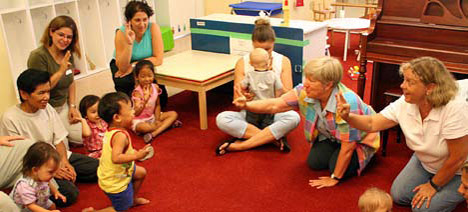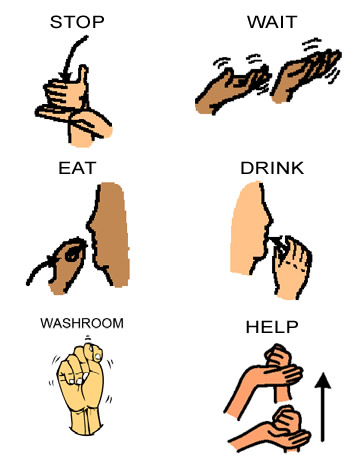
We communicate with others in different ways. We can greet a friend by saying “hello”, by waving our hand, or smiling at them. As a parent, teacher of early childhood professional you can use gestures or signs while speaking. This can help to enhance your child’s receptive language (understanding) by providing her with a visual cue. It also assists adults by slowing down their accompanying speech and emphasizing the key words.
Using Gestures
Gestures are a natural part of communication. When adults exaggerate gestures, the information provided becomes clearer.
Let’s take a look at some examples of gestures you can use throughout the day to help your child understand:
-
Directions
- rub your hands together to show it is time to wash hands
- tap your head to let your child know she needs to put on a hat
- you can pat the chair or spot on the floor while saying “Sit down.”
-
Greeting
- waving hi or bye
-
Concepts
- using your fingers to show how many (e.g., give me one cookie)
- fanning yourself to show that it is hot, or rubbing your arms to show that it is cold
Using Signs
In addition to helping children understand others, signs are often introduced as a support to learning speech or verbal communication. Signing can take the pressure off and actually help children say the words. Signing, along with speech, provides information in three different learning styles: auditory, visual, and kinesthetic (movement and touch). Signing supports children who learn in any of these three ways, in contrast to speech which is only auditory. Children who learn through movement are good candidates for using signs themselves.
A speech-language pathologist should be consulted when considering using signing as a child’s main method of communication.
Some basic signs can be introduced as a general support. Signs to give your child information could include: stop, wait, eat, drink, washroom.

Your child will be more likely to use signs if the ones chosen serve a specific purpose and are important for your child to learn. For example, if signing “more” gets the child more of something she likes, she will be motivated to learn. “My turn” and “Help” are also useful as they can help your child get something she enjoys or wants.
